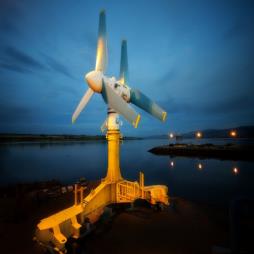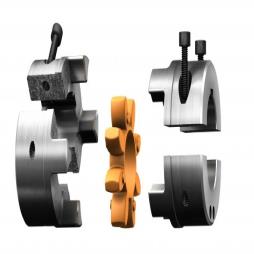KTR helping the UK to the lead the way in wave and tidal technologies
23-11-2014
With an abundance of coastline the UK is well positioned to play host to the development of this increasingly popular form of renewable energy. The UK and Scottish governments wish to ensure that 20% of the current electricity supply for Britain is provided by marine-energy production and emission targets are met. Interest is also growing with the larger energy companies as they steadily become more financially involved in research and development.
Originally, the hopes of replacing fossil fuels with the potential of marine energy, as our main electricity source, was merely talk. Wave power was the original leading idea, and has made some promising progress, but it looks as if tidal power could now be edging ahead in the race for mainstream employment. Renewable UK highlighted that the sector could be worth £3.7 billion to the UK by 2020, based on growing potential worldwide.
The current leader of tidal power, Norway’s Hammerfest Storm, sent their HS1000 1MW underwater turbine to Orkney where it was successfully tested and is now set to ‘go live’ in Scotland, providing Eday Island’s homes and businesses with electricity. ScottishPower Renewables were granted permission for the test device from the Scottish government in 2011, making it Scotland’s first and only consented power project to date.
Norway is currently regarded as one of the world’s most advanced nations for the development of tidal turbine designs. Andritz Hydro Hammerfest developed the HS1000 tidal turbine with the capacity to provide the annual electricity supplies of 500 homes; their recent prototype design is based on a mixture of technology inspired by traditional onshore wind turbines, subset oil & gas production and in hydro-power plants. Engineers are able to operate and inspect the device remotely from Glasgow using mobile connections and an on-board camera, but the turbine is also monitored from the European Marine Energy Centre (EMEC) base in Eday. The machine delivered its first energy to the grid in early February and was run up to its full capacity in May 2012.
Alan Mortimer, Head of Innovation at ScottishPower Renewables, said: “Tidal power has tremendous potential to supply a significant proportion of Scotland's electricity needs in the coming decades. We have some of the best marine power resources of any country in the world. Our proposed tidal power project in Islay is the only scheme in Scotland to have received planning permission, so we are breaking new ground when it comes to delivering a project of this nature.”
In June this year, Andritz Hydro Hammerfest won the award for “International Pioneer Award” during the 9th Energy Ocean International Conference & Exhibition.
The award was given to the company in Boston, USA for their contribution and efforts in exploring marine energy.
Mark Glazer, Show Director at the Energy Ocean International Annual Award says:
“This is the 9th year we are presenting the International Pioneer Award. The work that Andritz Hydro Hammerfest is doing in the way of tidal energy in Europe displays the excellence that is expected of an award recipient.”
Marine energy companies are seeing a growth in investments from industrial groups and renewable energy output is expanding, which is great news as this helps speed up the testing phase for both wave and tidal devices. The diversity of the designs being tested have varied as much as the first attempts at manned flight, but there appears to be some slight design preference emerging for both wave (E-on's sausage link design) and tidal (Hammerfest underwater turbine). The long titled Pentland Firth and Orkney Waters Marine Energy Park is expected to pool private and public organisations working in marine energy to help bring emerging technologies to the market.
Wave power has become increasingly popular due to Pelamis Wave Power Ltd who supplied the world’s first multiple-machine wave farm. The technologies that the company produce received a boost from the UK and Scottish governments in 2011 with an increase in incentives provided for marine-energy production.
Pelamis are the world’s first to export energy from an offshore wave energy supporter to an onshore grid network. They are currently securing the UK’s first commercial orders for wave energy converters from utility customers E-on and ScottishPower Renewables.
Last November, Pelamis said it was looking to team up with a “strong” industrial company and had hired Ernst & Young LLP to facilitate the process. The most likely strategic investors would be large power engineering companies that haven’t already backed wave technology.
KTR Couplings has been working with Pelamis, supplying ROTEX couplings, at various stages of prototyping. Whilst low quantities currently characterise KTR’s involvement with projects such as Pelamis, there is great potential for the future of wave power technology and other marine based sources of renewable power generation, a point recognised by the active involvement of major utility firms. KTR Couplings is aiming to establish itself as a leading provider of power transmission solutions within the industry and is excited about future developments as things progress towards integration with the nations power grid.



